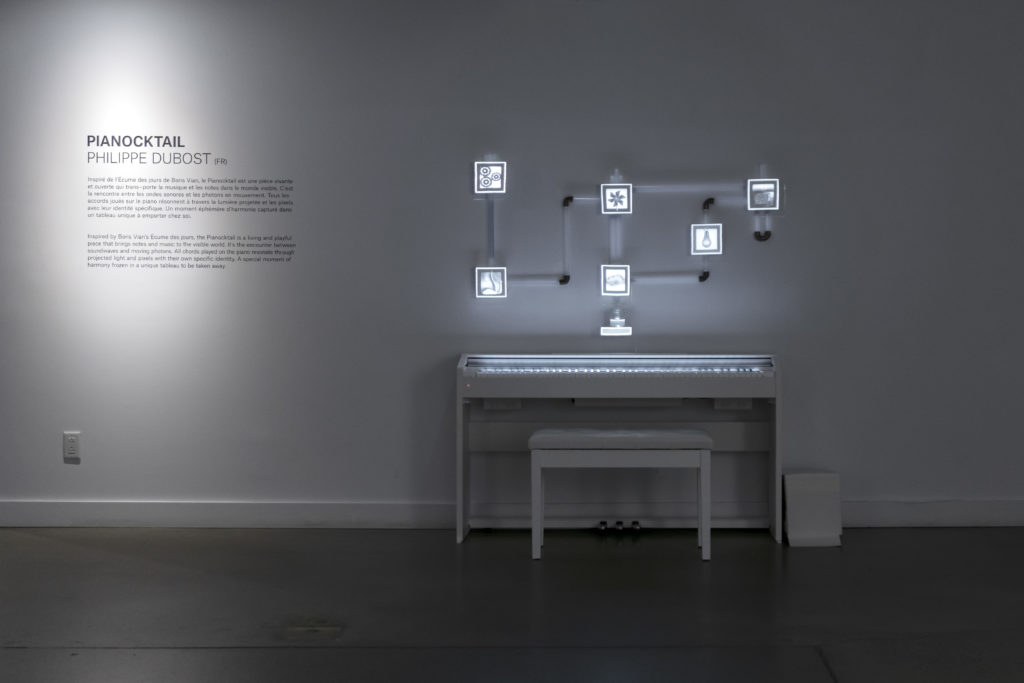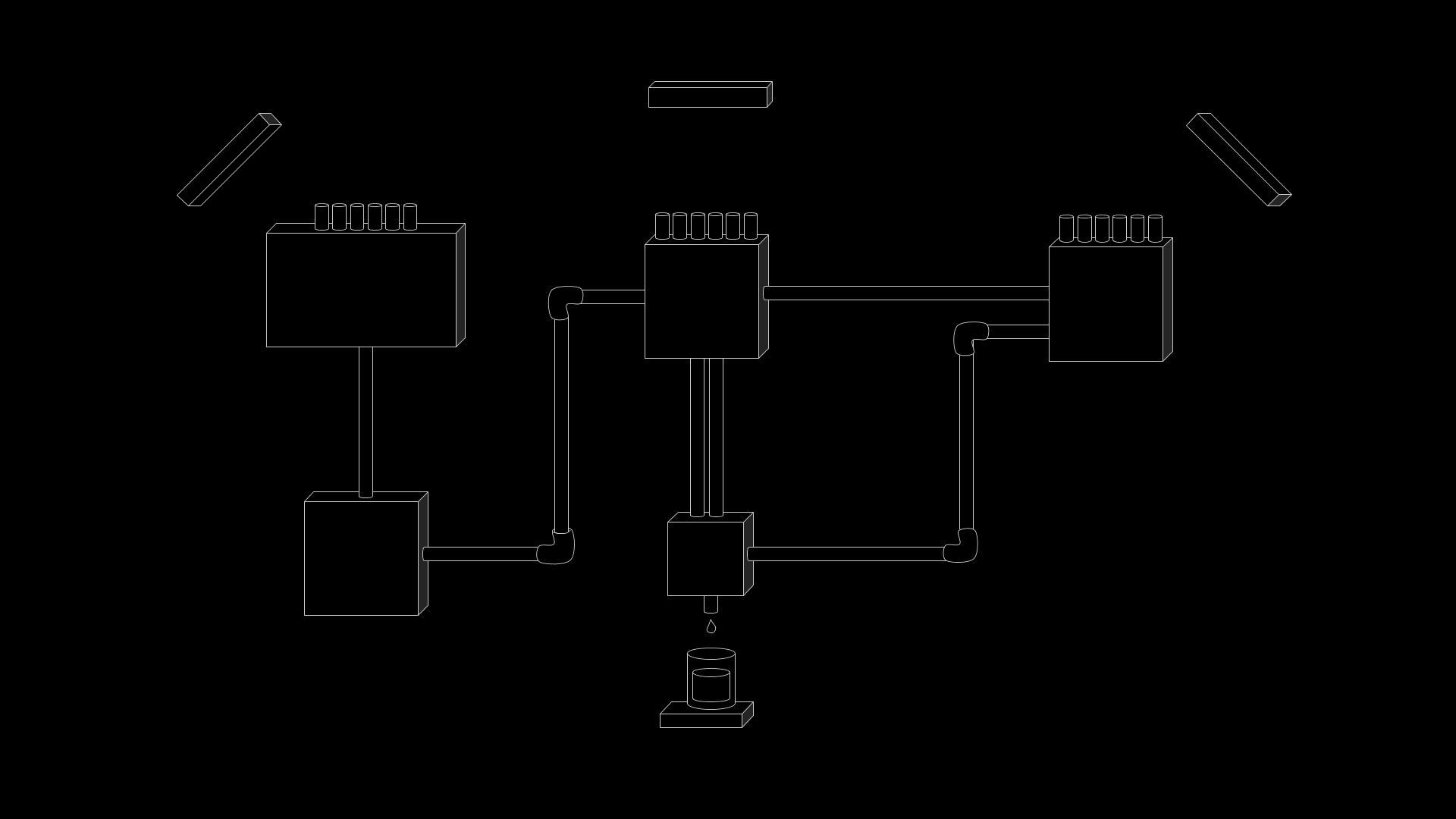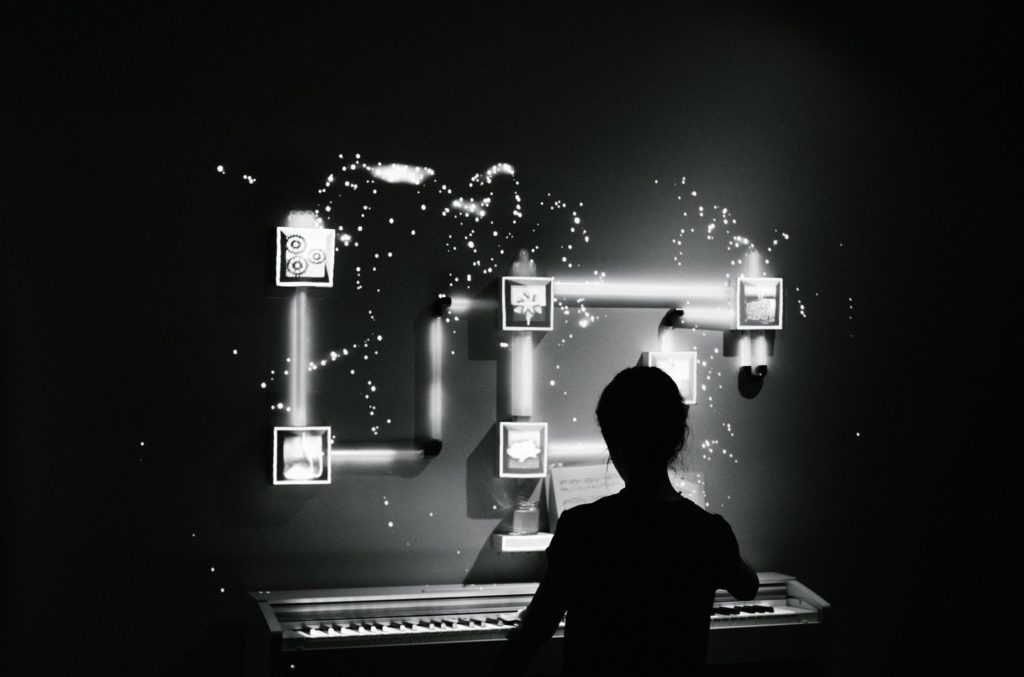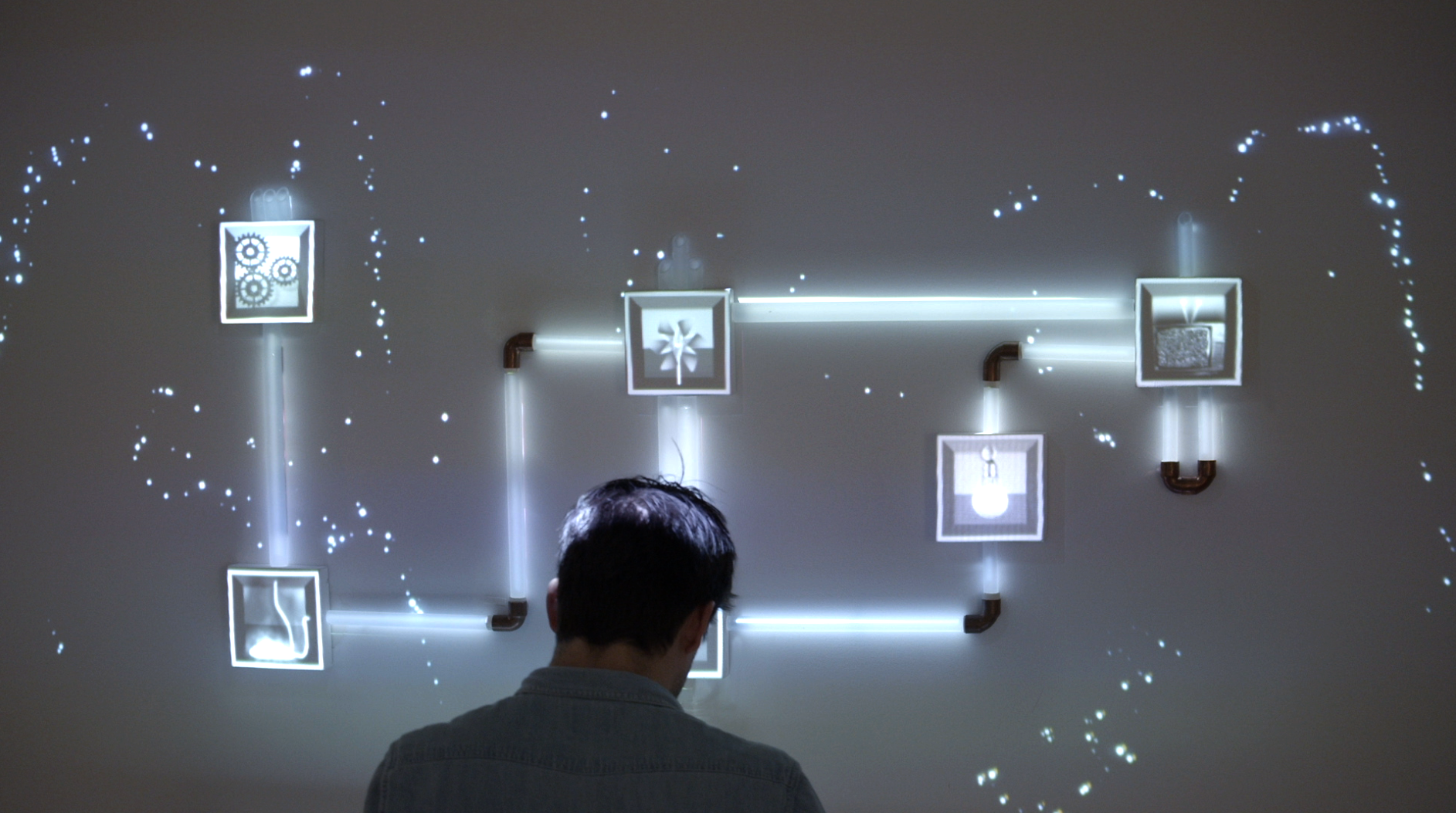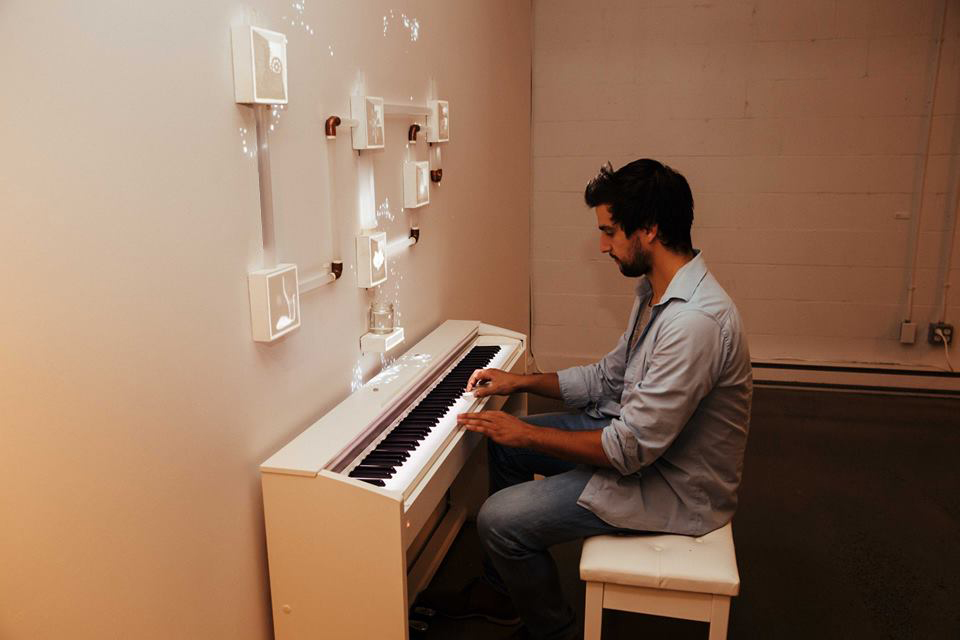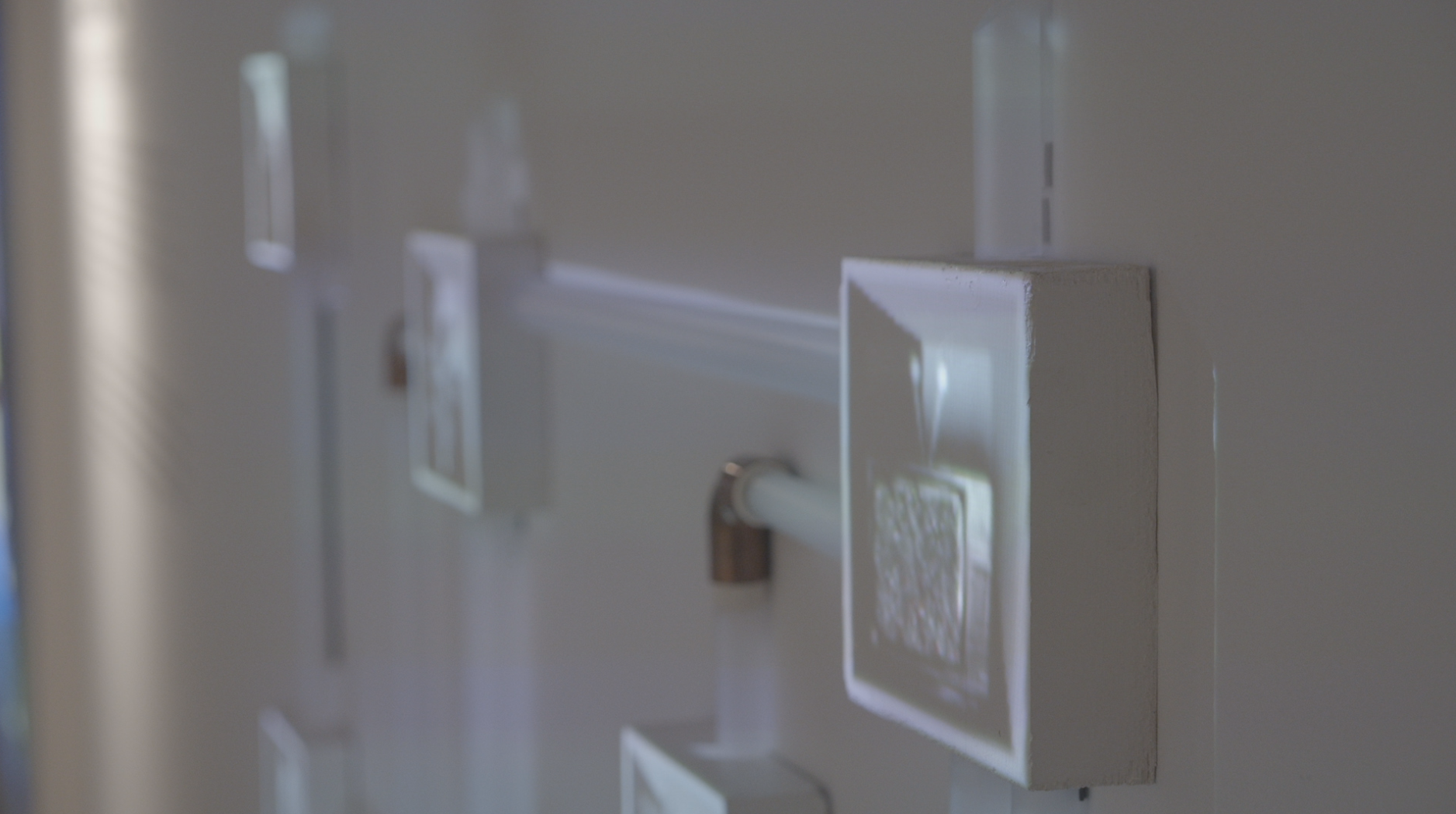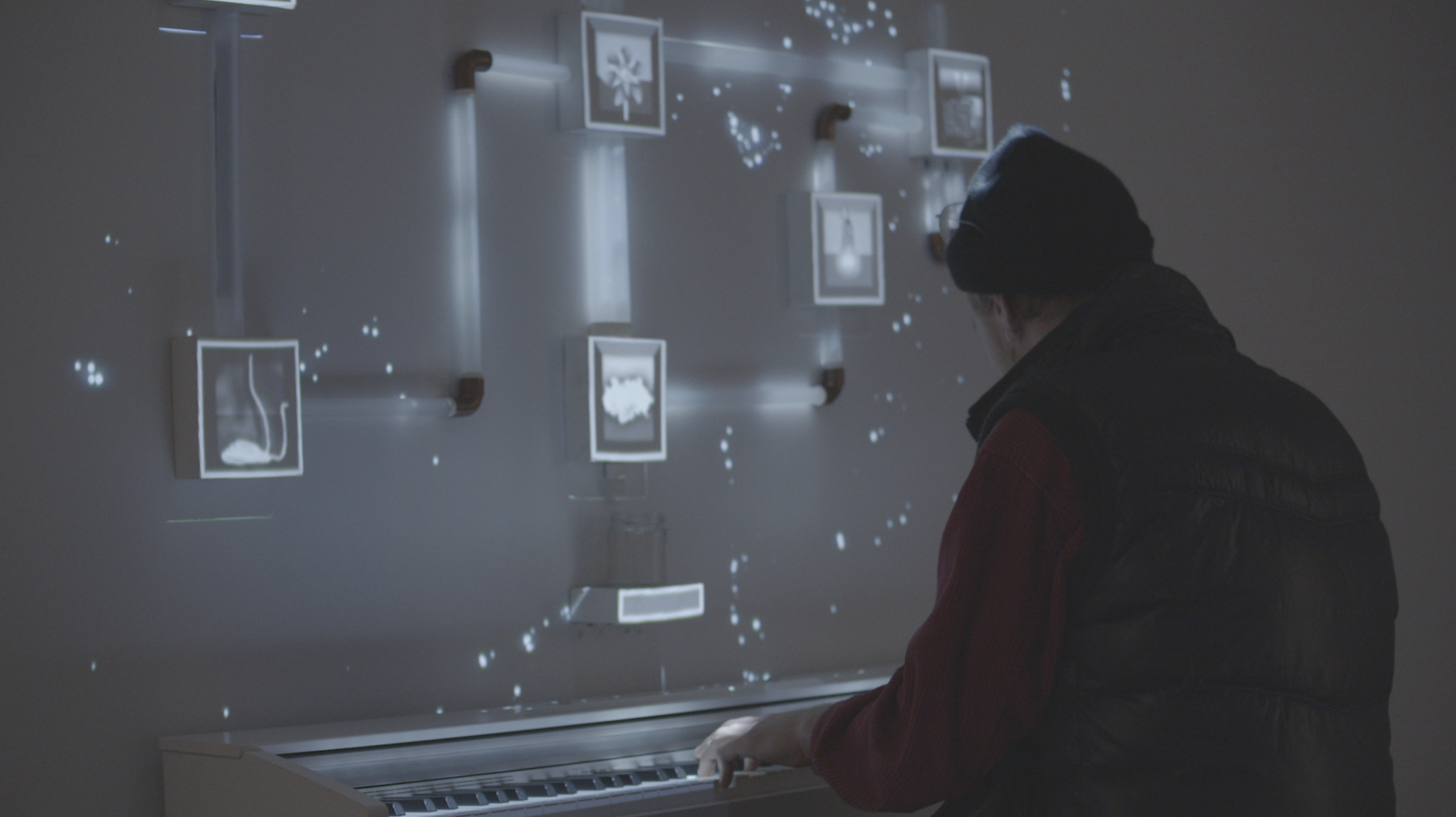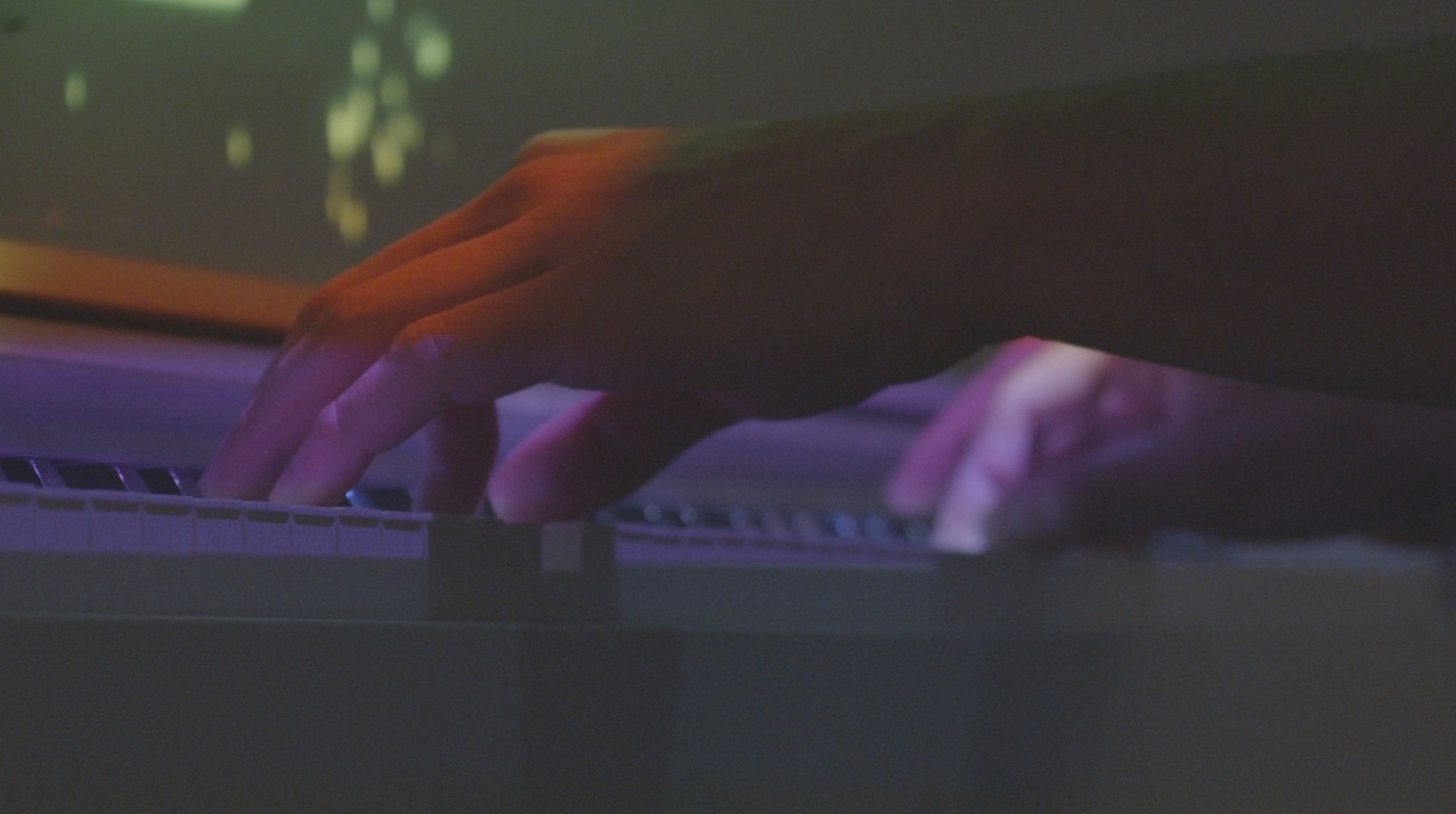story
Chess, cooking and the piano share one very specific aspect: a very basic interface able to generate infinite complexity and subtle substance. In 2018, I stepped further on a discovery path towards music and harmony. By learning the piano, but also by revisiting one of my favourite childhood book: L'Ecume des jours (Froth of the Daydream).
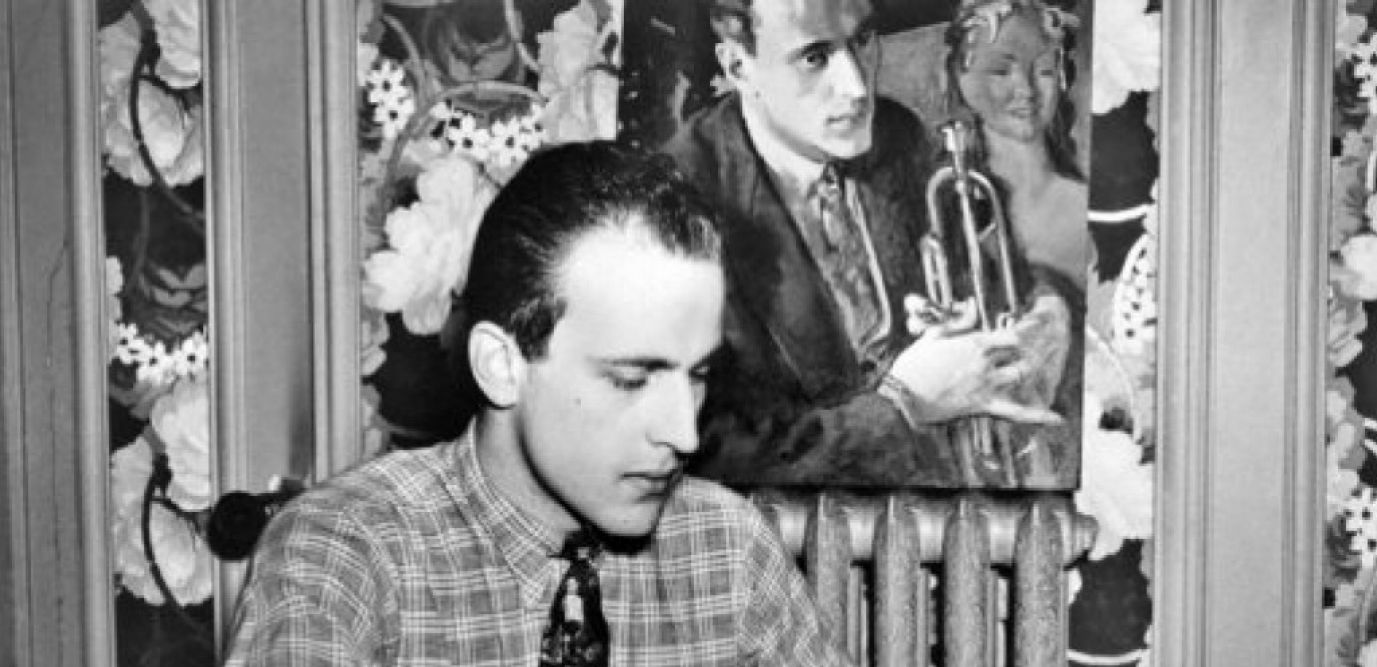
« — Would you like a drink? asked Colin. My pianocktail is finished, you could try it out.
— It works? asked Chick.
— Perfectly. I had trouble getting all the bugs out but the results go beyond my expectations. I got a truly astounding mix out of Black and Tan Fantasy.
— How did you make it work? asked Chick.
— With every note, said Colin, I’ve matched a spirit, liqueur or flavoring. The loud pedal corresponds to whipped egg and the soft pedal to ice. For seltzer water, you need to do a trill in the upper register. The quantities are in direct proportion with the duration: the 64th note equals a 16th part, a quarter note one part and a whole note four parts. When playing a slow tune, a leveling system is put to work so that the quantity is not increased—that would make for too abundant a cocktail—only the alcohol content. And, depending on the length of the tune, the part’s valence can be changed, reducing it for example to one one-hundredth to get a drink that takes into account all of the harmonies by means of a lateral regulator.
— That’s complicated, said Chick.
— Everything is controlled by electrical contacts and relays; I won’t give you the details, you know all that. And besides, what’s more, the piano really works.
— That’s marvelous! said Chick.
— There’s only one problem, said Colin. The loud pedal for the whipped egg. I had to put in a special system of interlocking parts because when you play a tune that’s too "hot," pieces of omelet fall into the cocktail and it’s hard to swallow. I’ll modify that. For the time being, you just need to be careful. For the sour cream, it’s low G.
— I’m going to make myself one on Loveless Love, said Chick. It’ll be great.
— It’s still in the junk room that I turned into a workshop, said Colin, because the protection plates aren’t screwed in. Come on, let’s go. I’ll set it for two cocktails of about twenty centiliters, to start off with.
Chick sat down at the piano. At the end of the tune, part of the front panel opened up with a clap and a row of glasses appeared. Two of them were filled to the rim with an appetizing mixture.
— You scared me, said Colin. At one point you hit a wrong note. Luckily, it was in harmony.
— It accounts for the harmony? said Chick.
— Not all the time, said Colin. That would be too complicated. There are only a few constraints. Drink and come eat. »
The naive and deeply poetic approach used by Boris Vian with the piano made me want to mix audio and visual ingredients together.
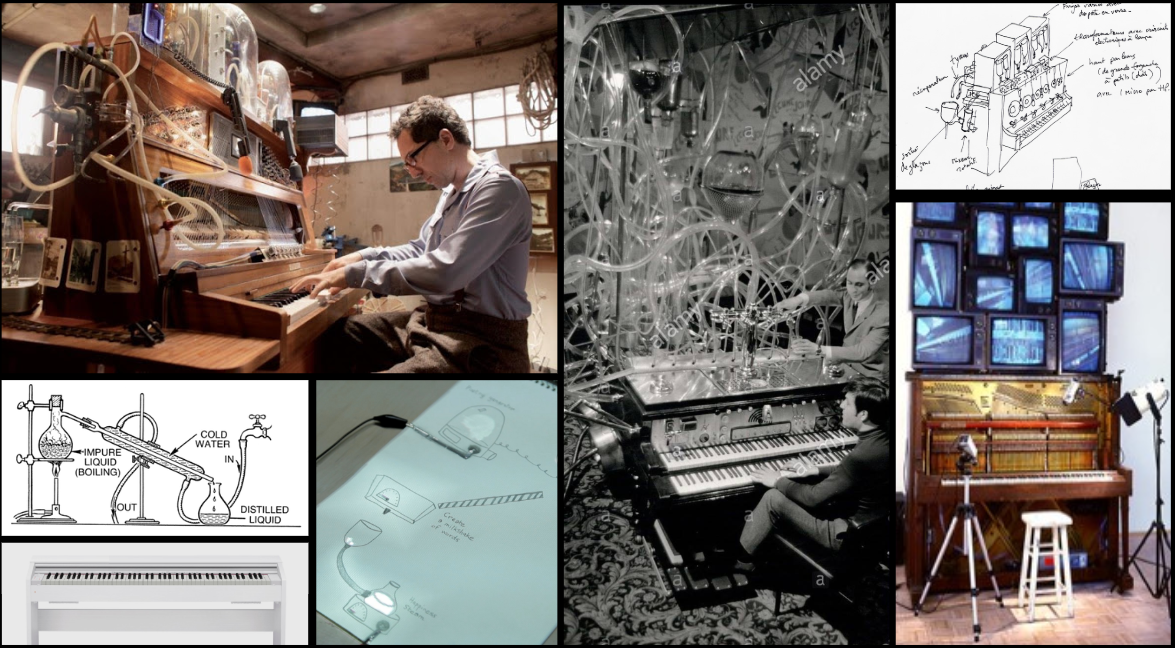
The central idea was to combine the simplicity of black and white projection on the piano, with the complexity and sophistication of organic particles following biologic rules called Murmuration (behaviorial flocking).
Like in this natural phenomenon documented in Ireland a few years ago, ech of the particle followz a set of simple rules and reacts to its direct neighbours behaviours. On the other hand, forcefields and currents can be drawn and evolve according to the energy of the music to guide the energy flow.

Then the machine creates chain reactions echoing our very own brain chemistry behind our musical emotions: free, uncontrollable and tough to rationalize. I wanted to project on laboratory glassware at first but the light angles and the result weren't satisfying enough.
This failure led me to a piece that recalls the Cabinet of Curiosities which perpetually responds and moves once the notes are swallowed.
In front of the pianist eyes, the liquid metaphor resurface. A shy and tiny glass captures all the chords and arrangements played on the piano in a drop of light.

